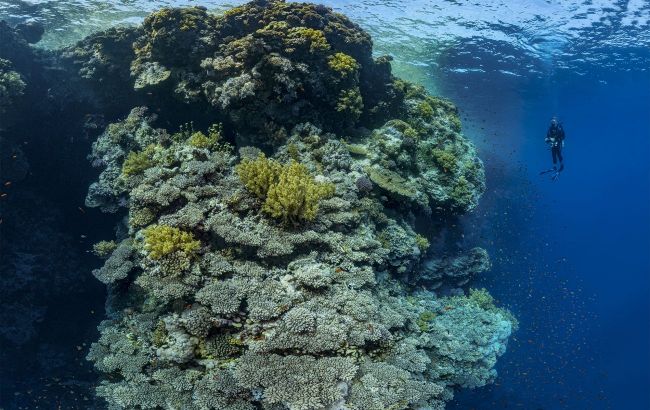5 long-lived animals who can witness new century
 Which animals live the longest (illustrative photo: GettyImages)
Which animals live the longest (illustrative photo: GettyImages)
There are many animals in the world that can boast amazing longevity records. Some of them can live for centuries, even halting the aging process.
Greenland shark

Greenland shark (photo: flickr.com, andyaj58 AJ)
Greenland sharks are creatures with the longest lifespan among vertebrates. The oldest known individuals recorded by scientists are about 400 years old, though with a significant margin of error, it can be assumed that they could live for over 500 years.
Researchers believe that living in the cold waters of the North Atlantic and the Arctic Ocean likely helps slow down the metabolic processes and biochemical activity of these sharks, thereby extending their lifespan.
It is believed that female Greenland sharks are not ready to reproduce until they are 156 years old. It is also known that sharks of this species lack kidneys and excretory pathways. Urea is expelled from the animal's body through its skin, which results in shark meat containing a high concentration of toxic substances.
Saltwater crocodile

Saltwater crocodile (photo: wikipedia.org)
If they reach adulthood, saltwater crocodiles (Crocodylus porosus) typically live for more than 70 years. There is a lack of precise information about their maximum lifespan. However, records of two long-lived individuals suggest that they can live for over 120 years.
For example, Cassius, the largest crocodile in captivity, is estimated to be up to 120 years old. He was captured in 1984 on a ranch in Australia and has since resided at the Marineland Crocodile Park on Green Island. At the time of his capture, his length was 5.13 meters, leading experts to estimate his age at between 30 and 80 years.
Another long-lived saltwater crocodile is Mr. Freshie, who, according to expert estimates, lived between 120 and 140 years. The crocodile, aged 80-100 years, was captured in North Queensland by Steve Irwin and his father in 1970. The reptile was then transported to the Australia Zoo, where he lived for 40 years until his death in 2010.
Aldabra tortoise

Aldabra tortoise (photo: wikipedia.org, User Szilas)
Tortoises are well-known as some of the longest-living animals. One of the long-lived species is the Aldabra giant tortoise, also one of the largest tortoises.
These reptiles, native to the Seychelles Islands, typically live up to 150 years and can reach a weight of up to 250 kilograms. One Aldabra giant tortoise lived in captivity in India and was believed to be 250 years old. Its name was Adwaita, and it passed away in 2006.
Another Aldabra giant tortoise, named Jonathan, is reportedly around 192 years old and may be the oldest living land animal today. Jonathan is currently cared for by veterinarians on Saint Helena Island.
Greenland whales

Greenland whale (photo: wikimedia.org, User Holly Cheng)
Greenland whales, living in the icy waters of the Arctic and Subarctic Oceans, are considered the oldest whales, making them the longest-living mammals.
Interestingly, despite living in polar latitudes, these whales do not enjoy being surrounded by ice, although they are forced to navigate through the ice floes.
Greenland whales can live for over 200 years, reaching sexual maturity at around 25 years of age. Although Greenland whales are not currently endangered, they have been depleted due to commercial whaling and still face the threat of entanglement in fishing gear.
Tuatara

Tuatara or Heterodera (photo: wikipedia.org)
Tuatara has one of the slowest growth rates among all reptiles - they can live for around 100 years. However, it is believed that a tuatara can live up to 200 years under favorable conditions.
These lizard-like animals are the largest reptiles in New Zealand and the only living representatives of the order Rhynchocephalia. Sometimes, tuataras are referred to as living fossils because they have no living relatives.
For nearly 200 million years, these creatures have existed without significant changes in their structure. For example, male tuataras have sharp spines on their backs, which they use to attract females and defend themselves from other members of their species.
Recently, we shared information about the 5 most dangerous animals for tourists.
The following sources were used in the preparation of the article: International Fund for Animal Welfare, Live Science, Wikipedia.

